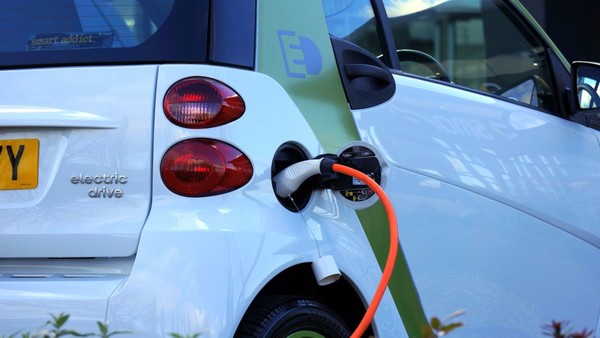SODIUM BATTERIES: THE TECHNOLOGY THAT COULD MAKE THE EU LESS DEPENDENT ON CRITICAL MATERIALS
Sodium-ion batteries operate in much the same way as their lithium counterparts, but they offer a promising alternative—particularly in terms of material sourcing. A solution for developing energy storage systems and powering electric vehicles in the future.
The number of electric vehicles on the road worldwide is rising rapidly: in 2024, more than 17 million were sold—an increase of 25% compared to 2023, according to analysis firm Rho Motion. The sharpest growth was recorded in China (+40%), followed by the United States and Canada (+9%), while Europe saw a 3% decline (with Italy down 2%) after four years of strong expansion.
As a result, demand for batteries to power these vehicles is set to increase.
How can it be met? This is one of the main areas where sodium-ion technology could be applied, that is attracting increasing interest from both the scientific community and industry.
HOW SODIUM-ION BATTERIES WORK
Sodium-ion batteries operate in much the same way as lithium-ion ones, as both generate electricity through reversible chemical reactions. In practice, during charging, sodium ions move from the cathode to the anode through an electrolyte, storing energy that is then released during the next phase, the discharge one, when the process is reversed.
At present, sodium-ion batteries are most commonly used for large-scale energy storage for wind and solar power. However, they also hold significant potential in the mobility sector, as demonstrated by Chinese electric vehicle manufacturer BYD, a rival to Tesla, which is already making use of this type of battery.
THE ADVANTAGE OF INDEPENDENCE FROM CRITICAL MATERIALS
One of the key advantages of sodium-ion batteries lies in the availability of the materials they are made of—especially sodium, which makes up 2.8% of the Earth’s crust and is one of the most abundant elements on the planet.
This could help reduce the EU’s dependence on critical raw materials and rare earth elements essential to lithium-ion batteries, such as cobalt, graphite and nickel. These materials pose a dual challenge: not only are they limited in supply, but their sourcing is often threatened by external geopolitical factors, especially China’s leadership in extraction and production.
To address this scenario, the European Union introduced the Critical Raw Material Act in 2024, with the aim of strengthening all stages of the supply chain. Overall, EU demand for rare earths is expected to increase sixfold by 2030 and sevenfold by 2050, while demand for lithium is set to rise twelvefold and twenty-onefold over the same timeframes.
That said, research into sodium-ion batteries—particularly at industrial scale—still has ground to cover. One area requiring improvement is energy density, which remains lower than that of lithium-ion technology. As a result, sodium-ion batteries are currently not very suitable to devices that demand lightness and compactness, such as smartphones.
Their sustainability and circularity also have room for progress. The environmental impact could be reduced by replacing graphite—a critical raw material used for anodes—with hard carbon, which can be derived from biomass and production waste through pyrolysis. However, this thermochemical process is both lengthy and energy-intensive.
THE EUROPEAN UNION IS BETTING ON SODIUM BATTERIES
Alongside various European companies developing sodium-ion batteries, the European Union itself is investing in research and development to support the adoption of this technology.
Among the most significant initiatives is the EU-funded SIMBA project, which brought together research institutes, universities and companies from across the continent between 2021 and 2024. The outcome? The development of a safe, low-cost solid-state sodium battery technology, along with the reconfiguration of lithium-ion battery production lines to accommodate sodium-ion ones, while developing a comprehensive recycling strategy.
Also funded by the EU was the NAIMA project, which concluded in 2023. It developed and tested a new generation of sodium-ion cells, demonstrating that they are highly competitive, safe and robust, while offering the most convenient alternative to lithium-based technologies.
Meanwhile, German battery giant Varta recently launched the ENTISE research project, aimed at developing environmentally friendly, industrially scalable sodium-ion batteries. The initiative is being carried out in collaboration with a consortium of companies and universities, supported by a grant of around 7.5 million euros from the Federal Ministry of Education and Research.
Also of interest is the programme led by Altris, a Swedish company that has long been working on sodium-ion batteries featuring next-generation technological solutions. Some time ago, it began collaborating with Stora Enso—a major player in the biomaterials-based packaging and construction sector—to develop bio-based carbon materials to use in the anode production. In March 2025, Altris announced a partnership with car manufacturer Volvo.
Meanwhile, in Italy, there is GEFARM, a startup founded in 2021 and incubated since 2022 at Le Village by CA Triveneto. In February 2025, it launched a new company in Dubai, with the aim of promoting Italian technology in the United Arab Emirates. Its partner, Swiss firm HORIEN, produces sodium-nickel chloride batteries, with manufacturing facilities in Friuli Venezia Giulia, a research and development centre in Sardinia, and its headquarters in Padua.
Article written by Emanuele Bompan


